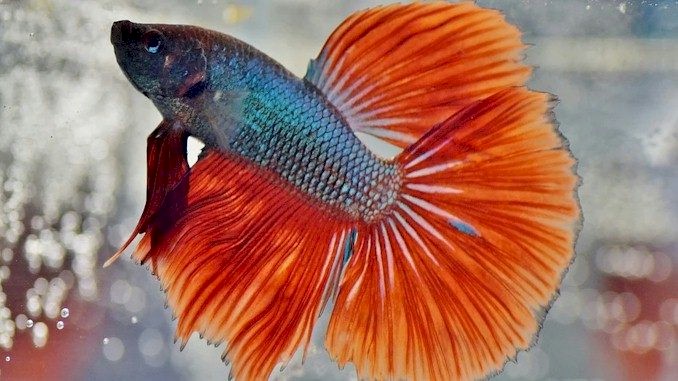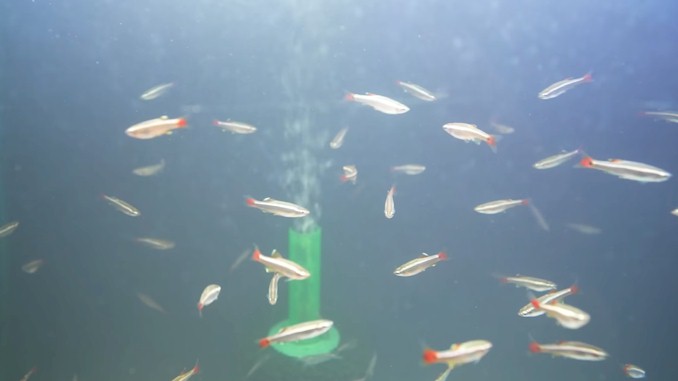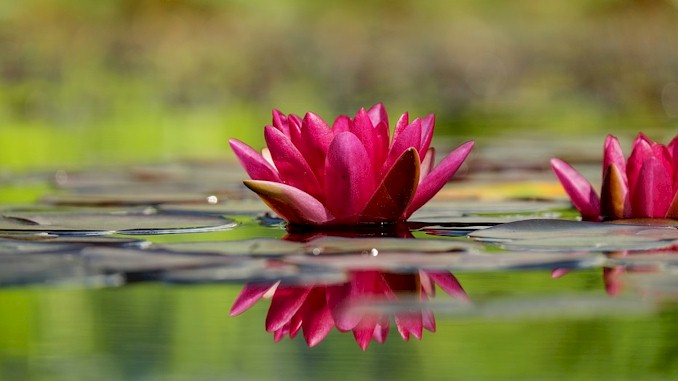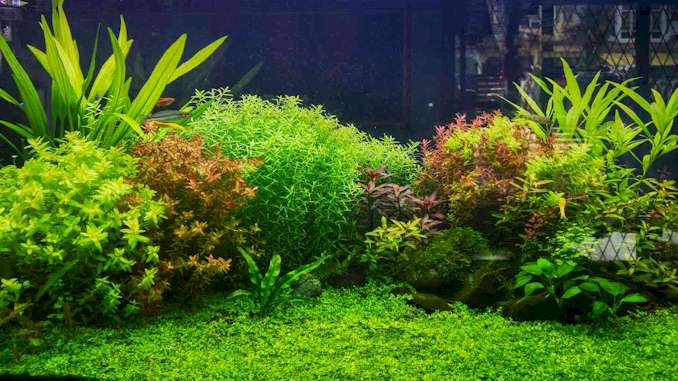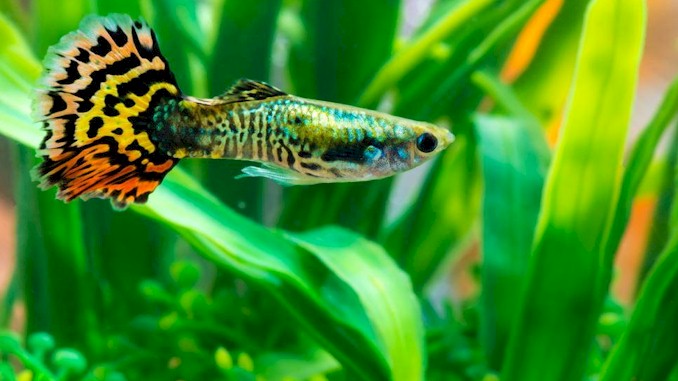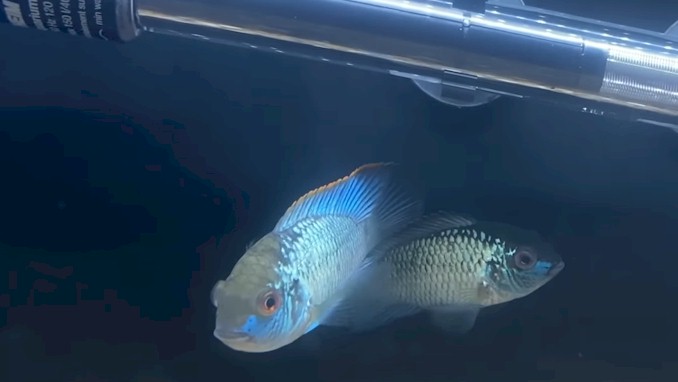Reviving Color: Solutions for Aquarium Plants Turning White
I remember the first time I noticed this happening in my own tank—aquarium plants turning white, it was quite alarming! But fear not, my friends, because I’ve got all the reasons and solutions you need to tackle this problem head-on. I’m so excited to share my personal journey with you, let me take you back to that moment when I discovered the answer and found a solution—it’s like uncovering a hidden treasure in the underwater world of our beloved aquariums. Trust me, I’ve got you covered!
When aquarium plants turn white, it can be attributed to various factors, including nutrient deficiencies, inadequate lighting, algae growth, or improper water parameters. To restore the vibrant green coloration and ensure the health of your aquatic flora, it is crucial to identify the underlying cause and implement the appropriate solutions.
I’ve only scratched the surface of this fascinating topic. In the following paragraphs, I’ll delve deeper into each possible cause of aquarium plants turning white, providing you with detailed explanations and practical solutions. You’ll discover valuable insights and expert tips to overcome this challenge. So, don’t miss out on the next section, where we’ll explore the specific reasons behind the color change and unveil effective strategies to bring back the lush greenery to your aquatic haven. Get ready to dive into a wealth of knowledge and transform your aquarium into a vibrant oasis!
Understanding the Phenomenon: Why Do Aquarium Plants Turn White?
Have you ever wondered why your once vibrant and green aquarium plants suddenly turn white? It can be a puzzling sight, but fear not, my fellow aquarists! Let’s embark on a journey of discovery to understand the reasons behind this phenomenon and find the solutions that will bring back the colorful splendor to your underwater world.
When aquarium plants turn white, it’s often a sign of underlying issues that need attention. One common cause is nutrient deficiencies. Just like we need a balanced diet to stay healthy, our aquarium plants also rely on essential nutrients to thrive. Without an adequate supply of nutrients such as nitrogen, phosphorus, and potassium, plants may struggle to maintain their green pigmentation, resulting in a paler, whitish appearance.
Another factor that can contribute to plants turning white is insufficient lighting. Light plays a crucial role in photosynthesis, the process by which plants convert light energy into chemical energy to fuel their growth. When plants don’t receive enough light or the right spectrum of light, their metabolic functions may be disrupted, leading to a loss of color. It’s kinda like trying to grow a sunflower in a dimly lit room—it won’t flourish without the proper amount of light.
Additionally, algae growth can also play a part in causing aquarium plants to turn white. Algae can compete with plants for essential nutrients and block sunlight, depriving plants of the energy they need. This can lead to the plants becoming weakened and losing their natural pigmentation. It’s a bit like a garden where weeds take over and suffocate the flowers, preventing them from thriving.
Lastly, improper water parameters can impact the health and coloration of your aquarium plants. Factors such as pH levels, water hardness, and temperature can all affect plant growth. If these parameters deviate from the ideal range for your particular plant species, it can result in stress and discoloration. Think of it as trying to grow a delicate orchid in freezing temperatures—it just won’t fare well.
You may take proactive measures to solve these underlying issues and bring back the lush, green beauty of your aquarium plants by being aware of them. I’ll go over each of these aspects in more detail in the sections that follow, giving you useful advice on how to deal with fertilizer deficiency, improve lighting conditions, control algae development, and keep the right water parameters. So let’s explore aquarium plants in further detail and see how their bright colors are achieved!
Shedding Light on the Issue: The Role of Lighting and Nutrients
When it comes to the health and coloration of your aquarium plants, lighting and nutrients are two key factors that play a crucial role. Let’s shed some light on these elements and understand how they contribute to the well-being of your aquatic flora.
Lighting is like the sun for your plants—it provides the energy they need for photosynthesis, the process that allows them to produce food and grow. Different types of plants have varying light requirements, so it’s important to choose the right kind of lighting for your specific plant species. Aquarium lights are available in different intensities and spectrums, mimicking the natural sunlight that plants thrive under. It’s kinda like giving your plants the perfect amount of sunshine they need to flourish.
Along with proper lighting, nutrients are essential for the healthy growth of your aquarium plants. Just like we need a balanced diet, plants require a variety of nutrients to thrive. There are three main types of nutrients that plants need: macronutrients, micronutrients, and carbon. Macronutrients, including nitrogen (N), phosphorus (P), and potassium (K), are required in larger quantities. They’re kinda like the main ingredients for plant growth. Micronutrients, such as iron (Fe), manganese (Mn), and zinc (Zn), are needed in smaller amounts but are still vital for plant health. Carbon, obtained through carbon dioxide (CO2) supplementation, is necessary for photosynthesis to occur.
To ensure your aquarium plants receive the necessary nutrients, you can use fertilizers specifically formulated for aquatic plants. These fertilizers contain the essential elements plants need to thrive. It’s important to follow the dosage instructions carefully to avoid over- or under-fertilization, which can have adverse effects on your plants.
In addition to nutrients, the duration and intensity of light exposure also play a role in plant health. Most aquarium plants require a photoperiod of 8 to 12 hours per day to thrive. It’s like giving them a day-night cycle, just like the sun rises and sets. However, it’s important to strike a balance—excessive light exposure can lead to algae growth, while insufficient light may cause plants to become weak and lose their color.
It’s worth mentioning that the type of lighting you choose can affect the growth and coloration of your plants. LED lights are energy-efficient and provide a wide range of spectrums suitable for plant growth. They also produce less heat, reducing the risk of overheating your aquarium. On the other hand, fluorescent lights are a more affordable option but may require more frequent bulb replacements.
You can cultivate the ideal environment for your aquarium plants to flourish by being aware of how important fertilizers and illumination are. Your underwater paradise will have robust development and bright hues if the proper kind and amount of light is provided along with a balanced nutrient supply. So let’s study the intriguing link between light and plants and delve deeper into the world of aquarium lighting!
Battling Algae Invasion: Algae Growth and Its Impact on Plant Health
Algae, those pesky green invaders, can be a persistent challenge for aquarium enthusiasts. Not only do they create an unsightly appearance, but they can also have a detrimental impact on the health of your aquarium plants. Let’s delve into the world of algae growth and understand its effects on your aquatic flora.
Algae are tiny plant-like organisms that thrive in aquatic environments. Just like plants, they require light, nutrients, and water to grow. When these factors are out of balance, it creates an opportunity for algae to flourish. Excessive nutrients, such as nitrogen and phosphorus, can act as a catalyst for algae growth. It’s kinda like providing them with a buffet of their favorite foods!
The presence of algae in your aquarium can overshadow your plants, literally. Algae can compete with plants for light, blocking the sunlight they need for photosynthesis. This light deprivation can weaken your plants and cause them to lose their natural green coloration. It’s like putting your plants in the shade while algae hog all the sunlight.
Moreover, some types of algae release compounds that are harmful to plants. These compounds can inhibit plant growth and disrupt their metabolic processes. It’s kinda like a bully in the aquarium, making life difficult for the other inhabitants, including your beloved plants.
To combat algae growth and protect the health of your aquarium plants, several strategies can be employed. One effective method is to maintain a proper balance of nutrients in the water. Regular water changes and the use of high-quality filtration systems can help remove excess nutrients that fuel algae growth. It’s like maintaining a clean and tidy environment for your plants, making it harder for algae to thrive.
Controlling the duration and intensity of light exposure is another crucial step in managing algae. Most aquarium plants require a specific photoperiod to thrive, and by providing the appropriate lighting schedule, you can limit algae growth. Additionally, algae thrive in stagnant water, so ensuring good water circulation in your aquarium can help prevent their establishment.
There are also algae-eating organisms that can be introduced to the aquarium, such as certain species of fish, snails, or shrimp. These helpful creatures can consume algae and help keep its growth in check. It’s like having little underwater superheroes that love to munch on algae.
However, it’s important to strike a balance. While some algae-eating organisms can be beneficial, an overabundance of them can lead to other issues, such as overgrazing or competition for resources. Therefore, it’s essential to research and choose the right algae-eating inhabitants that are compatible with your aquarium setup.
Understanding the causes and effects of algae growth allows you to put preventative measures in place and effectively control their presence in your aquarium. You may establish an atmosphere in which your aquarium plants can grow, free from the clutches of bothersome algae, with a little patience and the appropriate strategy. So, let us enter the realm of algae control and restore the beauty of your aquatic paradise!
The Balancing Act: Maintaining Proper Water Parameters
Water parameters are like the secret recipe for a successful aquarium. They include factors such as pH levels, water hardness, temperature, and more. Maintaining these parameters within the appropriate range is crucial for the health and well-being of your aquarium plants. Let’s dive into the world of water parameters and understand their importance.
pH level is a measure of the acidity or alkalinity of the water. Different plants have varying pH preferences, so it’s important to match their needs. It’s kinda like choosing the right soil type for different plants in a garden. Some plants prefer acidic soil (low pH), while others thrive in alkaline soil (high pH). Similarly, adjusting the pH level of your aquarium water to meet the requirements of your plants can ensure their optimal growth.
Water hardness refers to the concentration of minerals, particularly calcium and magnesium, in the water. It can be classified as either hard or soft. Some plants prefer soft water, while others are more suited to hard water. It’s like accommodating the preferences of different plants in a shared space. Testing your water hardness and making necessary adjustments can help create an environment that promotes healthy plant growth.
Temperature plays a crucial role in the overall well-being of your aquarium plants. Most tropical aquarium plants thrive in temperatures between 72°F and 82°F (22°C to 28°C). It’s kinda like providing them with the ideal climate for growth. Fluctuations in temperature can stress your plants and hinder their ability to thrive. Therefore, maintaining a stable temperature within the recommended range is essential.
In addition to pH, water hardness, and temperature, other water parameters such as ammonia, nitrite, and nitrate levels also impact plant health. Ammonia and nitrite are toxic to plants and can lead to their deterioration. It’s like exposing your plants to harmful substances that stunt their growth. Regular water testing and implementing appropriate filtration systems can help keep these parameters in check, providing a safe and healthy environment for your plants.
Another crucial aspect of maintaining proper water parameters is ensuring good water quality. Regular water changes, typically around 10-20% of the tank volume per week, help remove accumulated pollutants and maintain water freshness. It’s like giving your plants a breath of fresh air, purging the water of any potential harmful substances.
It’s important to note that different plant species may have specific preferences when it comes to water parameters. Therefore, researching the requirements of your specific plants and tailoring your water parameters accordingly can lead to optimal growth and vibrant colors in your aquarium.
As you have learned, you may create a harmonic atmosphere that supports the health and vitality of your aquarium plants by carefully monitoring and changing the various water conditions. Maintaining adequate water parameters enables a healthy aquatic ecology, much like a well-tuned symphony where every instrument plays its part in making beautiful music.
Restoring the Green: Effective Solutions to Revive Your Aquarium Plants
If your aquarium plants have turned pale or lost their vibrant colors, don’t worry! There are several effective solutions to revive their green glory. Let’s explore some tried-and-tested methods to bring back the life and vibrancy to your aquatic flora.
One common issue that can cause plants to lose their color is nutrient deficiency. As mentioned earlier, plants require a variety of nutrients to thrive. If your plants are lacking certain essential elements, it’s like missing out on key ingredients for a healthy meal. Adding a balanced fertilizer specifically formulated for aquatic plants can replenish the necessary nutrients and promote healthy growth. It’s kinda like giving your plants a nutrient boost to help them regain their vitality.
In some cases, algae may have taken over your aquarium, overshadowing and inhibiting the growth of your plants. To combat this, manual removal of excess algae is necessary. You can gently remove the algae using a soft brush or algae scraper. It’s like cleaning the slate to give your plants a fresh start. Additionally, introducing algae-eating organisms, such as certain fish species or snails, can help control algae growth and restore the balance in your aquarium ecosystem.
Improper lighting can also be a contributing factor to the loss of color in your plants. If your plants aren’t receiving sufficient light, it’s like they’re living in a dimly lit room. Adjusting the duration and intensity of light exposure can help stimulate their growth and restore their vibrant colors. Providing the recommended photoperiod for your plants, along with choosing the right type of lighting, such as LED or fluorescent lights, can make a significant difference.
Water quality plays a vital role in the health of your aquarium plants. If the water is contaminated with pollutants or toxins, it can hinder their growth and vitality. Regular water changes, as mentioned before, help maintain good water quality by removing accumulated waste and pollutants. It’s like giving your plants a fresh and clean environment to thrive in. Additionally, using high-quality filtration systems can help keep the water clean and free from harmful substances.
Sometimes, plants may suffer from root-related issues, such as rot or poor development. It’s important to ensure that the plants are properly anchored in the substrate and that their roots have ample room to grow. Adding a nutrient-rich substrate can provide the necessary support and nutrients for healthy root development. It’s kinda like giving your plants a sturdy foundation to anchor themselves and absorb nutrients from.
Lastly, proper care and maintenance are essential for the revival of your aquarium plants. Regular pruning and removing any decaying or dead plant matter can prevent the spread of diseases and improve overall plant health. It’s like trimming the overgrown branches of a tree to encourage new growth and maintain its vitality.
You may revive the green in your aquarium and your plants’ brilliant hues by using these practical methods. Your underwater garden may be rejuvenated and transformed into a gorgeous aquatic oasis with a little time, attention, and the appropriate strategy. So let’s go to work and bring back the splendor of your aquarium plants!
Further Exploration: In-Depth Explanations and Expert Tips
If you’re hungry for more knowledge and want to dive deeper into the world of aquarium plants, this section is for you. Here, we’ll explore additional in-depth explanations and expert tips to help you become a pro at maintaining a thriving aquatic garden.
First, let’s talk about CO2 supplementation. Carbon dioxide (CO2) is an essential element for photosynthesis, the process by which plants convert light into energy. In high-demand planted aquariums, providing additional CO2 can greatly enhance plant growth. It’s kinda like giving them a turbo boost! CO2 supplementation can be achieved through various methods, such as using CO2 injection systems or liquid carbon additives. However, it’s important to monitor and maintain the appropriate CO2 levels to avoid harming your fish or causing imbalances in your aquarium ecosystem.
Next, let’s discuss the importance of water circulation. Adequate water circulation helps distribute nutrients and oxygen throughout the aquarium, promoting healthy plant growth. It’s like having a refreshing breeze that carries all the necessary elements to every corner of your aquarium. Placing a powerhead or a circulation pump strategically in your tank can help ensure proper water movement and prevent stagnant areas where algae can thrive.
When it comes to plant selection, choosing the right species for your aquarium is crucial. Not all plants have the same requirements or growth habits. Some plants may require high light intensity, while others may prefer low-light conditions. Some plants are fast growers, while others are slower and more delicate. It’s important to research and select plants that are compatible with your specific setup and meet your desired aesthetic goals. It’s like handpicking the perfect plants for your underwater garden, ensuring they thrive in their chosen environment.
Regular maintenance and observation are key to keeping your aquarium plants healthy. Monitoring the growth patterns, coloration, and overall appearance of your plants can help you detect any potential issues early on. It’s like being a detective, closely observing the clues your plants give you. If you notice any signs of nutrient deficiencies, algae growth, or plant diseases, take prompt action to address them. This may involve adjusting nutrient levels, improving lighting conditions, or treating any diseases with appropriate remedies.
Expert aquarists often recommend implementing a balanced approach to plant care. This means finding the right equilibrium between providing the necessary nutrients, light, and CO2, without overdoing it. It’s like finding the perfect recipe for success, where all the ingredients are in harmony. Too much of any element can lead to imbalances and undesirable consequences. By carefully monitoring and fine-tuning your aquarium’s parameters, you can strike that perfect balance and create an environment where your plants can flourish.
Remember, learning about aquarium plants is a never-ending journey. By exploring different resources, seeking advice from experienced aquarists, and continuously experimenting with different techniques, you can expand your knowledge and become a true expert in aquatic plant care. So, keep exploring, keep learning, and enjoy the wonderful world of aquarium plants!
Creating a Lush Aquatic Oasis: Unlocking the Secrets to Thriving Aquarium Plants
Are you ready to take your aquarium plants to the next level and transform your tank into a lush and captivating aquatic oasis? In this section, we’ll uncover the secrets to achieving thriving and visually stunning aquarium plants. Get ready to unlock the key ingredients for success!
One of the fundamental factors for lush plant growth is providing the right substrate. Choosing a nutrient-rich substrate, such as specialized plant substrates or nutrient-rich soils, can provide a solid foundation for your plants to anchor their roots and access essential nutrients. It’s like giving them a nutritious soil bed to grow their roots deep and strong.
Another crucial aspect is selecting the appropriate plant species and arranging them strategically in your aquarium. By considering their growth habits, height, and leaf textures, you can create visually appealing layouts. It’s kinda like painting a beautiful picture with different colors and textures. Researching aquascaping techniques, such as the Dutch or Nature style, can inspire you to create captivating underwater landscapes.
To further enhance the growth of your plants, consider implementing a regular fertilization routine. Liquid fertilizers or root tabs can provide additional nutrients that may be lacking in your aquarium. It’s like offering your plants a well-balanced diet with all the essential nutrients they need to thrive. Be sure to follow the recommended dosages and schedule to prevent over-fertilization, which can lead to algae issues.
Proper lighting is another crucial element in creating a lush aquatic oasis. Different plants have varying light requirements, so it’s important to choose the right type and intensity of lighting for your specific plant selection. LED lights are a popular choice due to their energy efficiency and adjustable settings. It’s like providing the perfect amount of sunshine for your plants, mimicking their natural habitat.
Maintaining good water quality is essential for the overall health and appearance of your plants. Regular water testing and appropriate filtration are key. If necessary, consider using a water conditioner to remove chlorine and other harmful substances from tap water before adding it to your aquarium. It’s kinda like purifying the water to create a safe and healthy environment for your plants and fish.
Lastly, don’t forget the importance of pruning and maintenance. Regularly trimming overgrown or decaying plant parts can promote new growth and prevent the spread of diseases. It’s like giving your plants a little haircut to keep them neat and vibrant. Removing debris and performing routine water changes will help maintain optimal water conditions, supporting healthy plant growth.
You may build a stunning underwater paradise that will impress both you and your visitors by adhering to these tips for growing aquarium plants. A lush aquatic oasis can be created by being patient, paying attention, and using a little imagination. So get in, investigate your options, and watch as your aquarium plants grow like never before!
Conclusion
Aquarium plants often become pale or white due to environmental issues, such as insufficient lighting and a lack of essential nutrients. However, you can restore their vibrant colors by addressing the root causes. Failure to address these problems may eventually lead to the plants dying off.
To begin with, it’s important to identify any visible indicators. Keep an eye out for changes in color or discolored leaves. If you notice these signs, take immediate action. As an initial remedy, I recommend acquiring a good fertilizer to enhance the water’s nutrient content. This will help replenish the necessary elements for the plants’ well-being.


